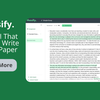{shortcode-3f3e004de357d4b365e73dfc937c58e07d85d3fe}
A few weeks ago the New York Times apparently discovered a report finding that Harvard students, as they put it, “skip class and still get high grades.” Shocking — or it would be, except the Harvard community has been aware of this report since it was published in January.
The Crimson covered the report when it was issued, both in news and opinion. Since then, Harvard has made some significant changes, including disallowing students from taking General Education courses pass-fail, restricting laptop use in class, and revising the student handbook to urge prioritization of classes.
The New York Times noted some in-class changes, but was relatively quiet on the extent of the administrative reforms implemented during the past nine months. This oversight might seem small — but it points to a much larger issue with press portrayals of Harvard: they flatten the complexities of the student experience.
It’s not a problem that Harvard receives plenty of media coverage. From tussles with the Trump administration to funding cuts to speech culture, much of what happens at the University is newsworthy. What is concerning, however, is what seems to be a growing media trend of oversimplified characterizations of campus life.
Take the NYT article. It is true that Harvard’s academic culture has significant room for improvement (something the school has taken steps towards addressing). Yet, from claiming that many Harvard students “coast” along in classes they skip to using Economics 10: “Principles of Economics” — an introductory course — as their main example of a Harvard education, the article oversimplifies the College’s academic culture. The NYT isn’t the only publication to paint such an uncomplicated picture — The Boston Globe published a very similar piece in August.
This one-dimensional coverage of Harvard’s academic culture is far from the most inflammatory media representation of Harvard and its students. Other outlets like Fox News and the New York Post have elected to excessively fixate on campus culture, smearing students and student activists as antisemitic. The NYP even went as far as to describe Harvard as a “cesspool of antisemitism” due to “woke activism,” distorting the school’s more nuanced antisemitism report in a gross misrepresentation of Harvard’s student protest culture.
Narratives like these feed off of and into a distorted portrayal of Harvard that has been weaponized by those who seek to antagonize institutions of higher education.
Practically every push for investigations into Harvard or more cuts to University funding has been accompanied by bad-faith portrayals of campus life. From claims that the University intentionally excuses rampant antisemitism among its students to nonsensical accusations that Harvard students cannot do basic math because the College offers remedial math classes, larger-than-life media portrayals have supplied a useful pretext for the Trump administration’s assault.
These attacks have not stopped at the Ivy League either. Universities across the country are now facing thinly-veiled threats to funding from the Trump administration due to supposed political bias and a perceived lack of “grade integrity.”
While Trump attacks universities nationwide, higher education continues to bleed public trust — less than half of Americans have a “great deal” of confidence in higher education in 2025, per a Gallup poll. Media misrepresentations of higher education feed into and exacerbate that negative public perception. Notably, the top reason for low confidence in higher education was fear of overly liberal politics and indoctrination — a narrative peddled in a high-profile manner against Harvard by the media.
When national media outlets cherry-pick evidence to lambast rampant antisemitism or lack of rigor at Harvard, this coverage helps lay the justificatory groundwork for such attacks. Harvard may be an easy target due to its perceived elitism, but the downstream consequences are dire.
Harvard isn’t perfect. But the media portrayal of Harvard is imperfect at best, and damaging at worst.
Adam N. Chiocco ’27, a Crimson Editorial editor, is a Philosophy concentrator in Pforzheimer House. Layla L. Hijjawi ’27, a Crimson Editorial editor, is a Social Studies concentrator in Quincy House. Elizabeth R. Place ’27, a Crimson Editorial editor, is a joint concentrator in Slavic Studies and English in Quincy House.
Read more in Opinion
The Bandaids on a Pedagogical Bullet Hole












